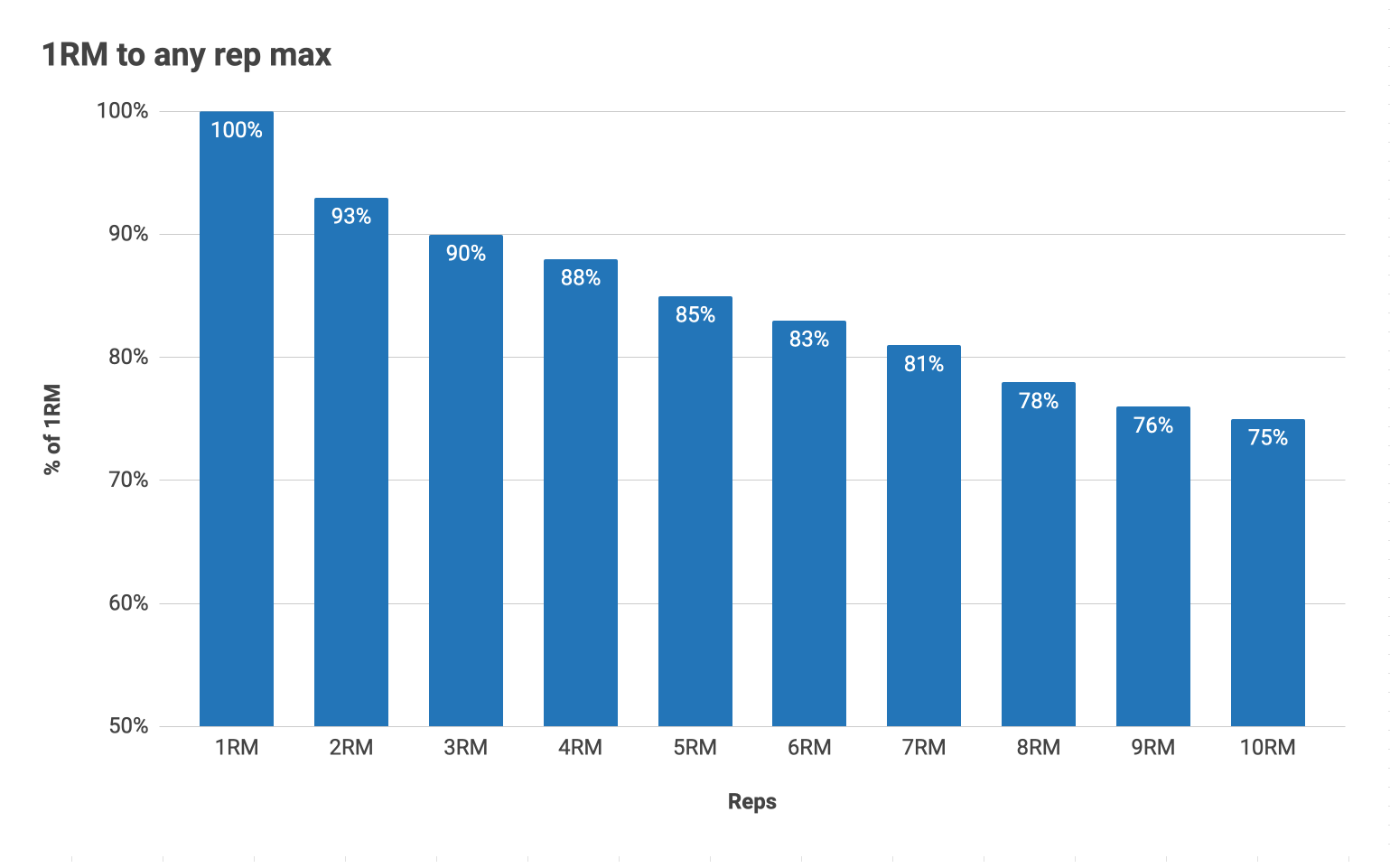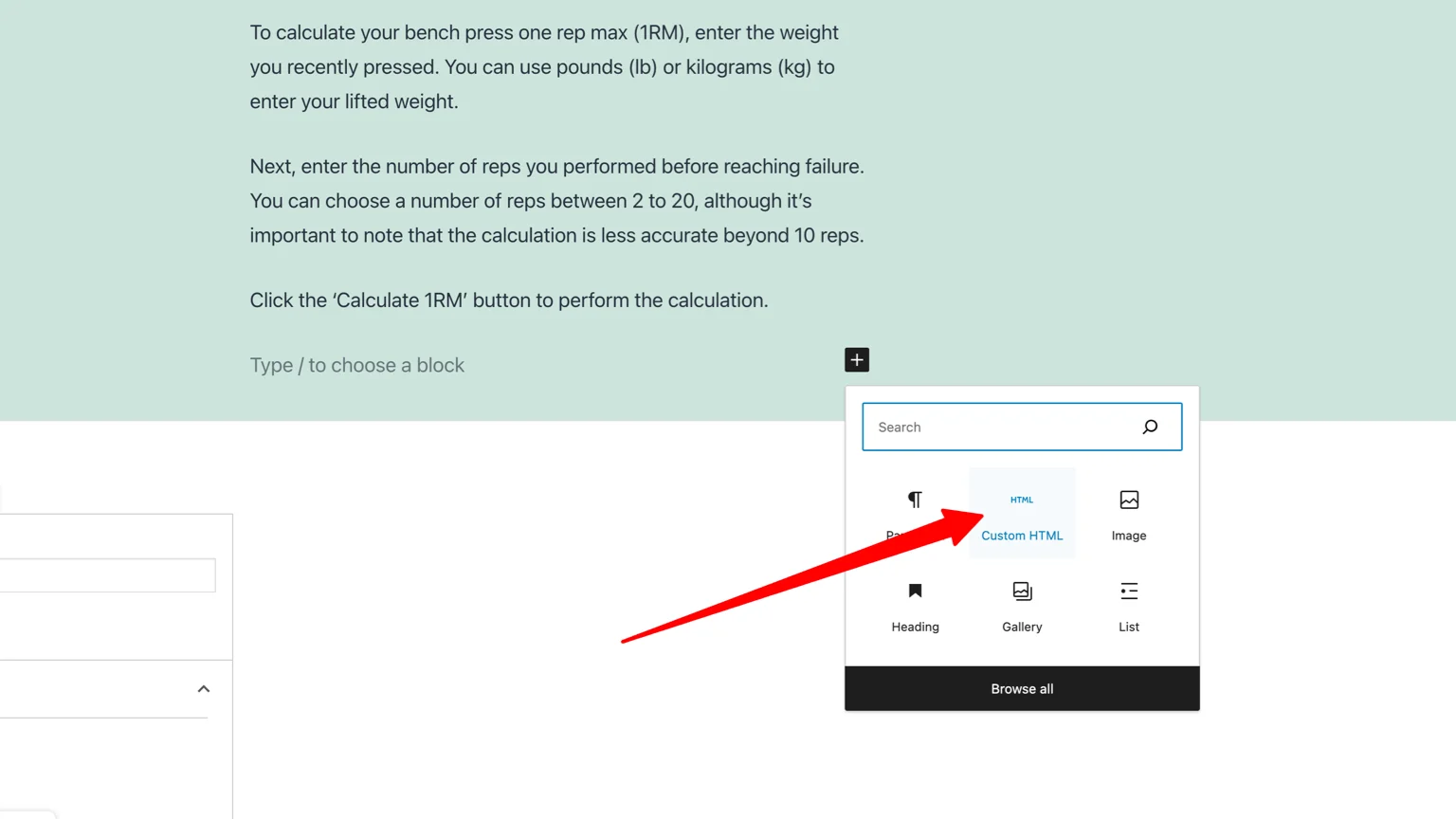Links marked with * — Partner products have been carefully selected by Gym Geek. When you purchase a product through one of these links, we may earn an affiliate commission. As an Amazon Associate we earn from qualifying purchases.
![]()
Most Popular Calculators
Calculators to try next:
The max bench calculator is a tool that estimates your one rep max (1RM) for the bench press. This is the maximum weight you can lift for a single rep and is a useful number for planning your strength training workouts and tracking your progression over time. Simply input the weight you can lift for a certain number of reps, and the calculator will estimate your 1RM.
What is one rep max (1RM)?
One rep max is the maximum weight you can lift for one repetition of a specific exercise. The rep must be executed safely, with a full range of motion and with the proper technique. If you need assistance from your spotter, this does not count as a rep.
1RM is a key benchmark in strength training and helps you design a suitable workout routine, as well as measure your progress over time.
The bench press 1RM is the maximum weight you can lift for a single rep of the bench press exercise. It’s a useful way to measure your upper body strength numerically.
Two rep max (2RM), three rep max (3RM) and beyond
Once you know your 1RM, you can also calculate your two rep max (2RM), three rep max (3RM) and more, using the same formula. These numbers estimate the maximum weight you can lift for multiple repetitions of the exercise. As the number of reps increases, the rep max number will decrease.
The formula is 30 * 1RM / (30 + Reps).
For example, if your 1RM is 200 lb, your 6RM would be 30 * 200 / (30 + 6) = 166.66 lb. You can put this back into the calculator (weight = 166 lb, reps = 6) to validate it returns the same 1RM.
You can also use this chart to covert your 1RM into any rep max figure. Simply find the percentage corresponding to the number of reps, and multiply by your calculated 1RM.

How is 1RM calculated?
We estimate your one rep max (1RM) using Epley’s formula. This is the most popular way to estimate 1RM.
The formula is Weight * (1 + Reps / 30). Note that you must perform at least two reps to use the formula.
Epley’s formula is reasonably accurate for bench press, squat and deadlifts according to research, although it’s important to stress that any one rep max (1RM) formula is only an estimate.
How to use the max bench calculator
To calculate your bench press one rep max (1RM), enter the weight you recently pressed. You can use pounds (lb) or kilograms (kg) to enter your lifted weight.
Next, enter the number of reps you performed before reaching failure. You can choose a number of reps between 2 to 20, although it’s important to note that the calculation is less accurate beyond 10 reps.
Click the ‘Calculate 1RM’ button to perform the calculation.
How to do a bench press
- Lie flat on the bench with a neutral spine. Keep your feet firmly planted on the floor. Line up your eyes so they are about level with the bar.
- Extend your arms above you and grip the bar with your hands about 4-6 inches wider than shoulder width.
- Bracing your core, unrack the bar and hold it directly above your chest your arms fully extended.
- Slowly lower the bar down until it lightly grazes the upper middle part of your chest.
- Finally, slowly push it straight back up into the air, until your arms are fully extended. As you push the bar upwards, exhale and ensure to breath in again before lowering the bar for the next rep.
Important: Always have a spotter present when performing the bench press.
Read more: How to Do a Bench Press
Tips for improving your max bench weight
Technique and proper form
Lifting with the proper form and technique is key to a successful bench press, and particularly important when working close to your 1RM. Always check the guide for each exercise and consult a personal trainer if you are inexperienced. Proper form not only avoids injury, it’s important to your progression.
Progressive overload
Keep your rep ranges aligned strategically to your fitness goals. Focus on lifting 80%-85% of your 1RM with sets of 4-6 reps. This range is optimal to building strength and will in time lead to increases in your 1RM.
Embed the max bench calculator on your website
Gym Geek’s calculators can be embedded on any website or blog, making it easy for your clients to calculate their 1RM directly on your website. Simply click the ‘Embed on your website’ button at the top of the page to get the embed code.
Using WordPress? Simply add a new block to your post or page and select ‘Custom HTML’ as the type:

References
Epley, B. (1985). Poundage chart. Boyd Epley Workout. Lincoln, NE: Body Enterprises, 86.
LeSuer, D. A., McCormick, J. H., Mayhew, J. L., Wasserstein, R. L., & Arnold, M. D. (1997). The accuracy of prediction equations for estimating 1-RM performance in the bench press, squat, and deadlift. Journal of strength and conditioning research, 11, 211-213.

